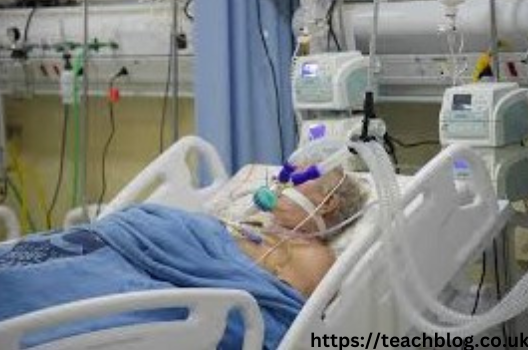Table of Contents
Oxygen is essential for life, and in many medical situations, supplemental oxygen becomes critical for patient care. Whether in a hospital, at home, or in a specialized care facility, the use of oxygen cylinders is common. However, the use of these cylinders comes with inherent risks that must be managed with care. Adhering to safety protocols is paramount to prevent accidents and ensure the safe delivery of oxygen therapy. In this article, we will explore the five key rules that must be followed when an oxygen cylinder is in use.
1. Proper Storage and Handling of Oxygen Cylinders
The first and most crucial rule when using an oxygen cylinder is ensuring proper storage and handling. Oxygen cylinders contain compressed gas, making them susceptible to high pressure and potential hazards if not stored correctly.
Storage Guidelines:
- Upright Position: Always store oxygen cylinders in an upright position. This reduces the risk of the cylinder tipping over, which could cause damage to the valve or regulator, potentially leading to a dangerous leak.
- Secure Storage Area: Store the cylinder in a well-ventilated area, away from any sources of heat or ignition. The storage space should be cool, dry, and free from flammable materials.
- No Smoking: Designate the storage area as a no-smoking zone. Oxygen is not flammable, but it supports combustion, meaning any nearby flame can ignite more easily in an oxygen-rich environment.
- Prevent Contamination: Ensure that the cylinder and its components are free from oils, grease, or other contaminants. These substances can react with oxygen, causing fire or explosion.
Handling Guidelines:
- Use Trolleys or Carriers: When moving the cylinder, use appropriate trolleys or carriers designed for oxygen cylinders. Never roll or drag the cylinder across the floor.
- Check for Leaks: Regularly inspect the cylinder for any signs of leakage. If a leak is detected, do not attempt to fix it yourself; contact a professional immediately.
- Avoid Rough Handling: Handle the cylinder with care, avoiding any rough movements that could damage the cylinder or its components.
Proper storage and handling not only ensure the safety of those around but also maintain the integrity of the oxygen cylinder, ensuring it functions correctly when needed.
2. Correct Usage of Oxygen Delivery Equipment
The second rule is to ensure the correct usage of oxygen delivery equipment, such as regulators, flow meters, and masks. Incorrect usage can lead to insufficient oxygen delivery or potential hazards.
Regulator and Flow Meter:
- Proper Installation: Ensure that the regulator is correctly attached to the oxygen cylinder. It must be tightly fitted to prevent leaks. The flow meter should also be set according to the prescribed oxygen flow rate.
- Check for Malfunctions: Regularly check the equipment for any malfunctions, such as a faulty regulator or an inaccurate flow meter. If any issues are found, replace the equipment immediately.
- Use Only Prescribed Equipment: Use only the equipment prescribed by the healthcare provider. Substituting with non-prescribed equipment can lead to incorrect oxygen delivery and potential health risks.
Masks and Cannulas:
- Correct Fit: Ensure that the oxygen mask or nasal cannula fits correctly. A loose mask can result in oxygen wastage, while an overly tight one can cause discomfort or skin irritation.
- Regular Cleaning: Clean the masks and cannulas regularly to prevent bacterial growth, which could lead to infections.
By following these guidelines, you can ensure that the oxygen is delivered safely and effectively to the patient.
3. Fire Safety Precautions
Oxygen itself is not flammable, but it significantly increases the flammability of other materials. As such, strict fire safety precautions must be observed when an oxygen cylinder is in use.
No Open Flames:
- Avoid Flames and Sparks: Ensure that there are no open flames, such as candles, matches, or lighters, in the vicinity of the oxygen cylinder. Sparks from electrical appliances should also be avoided.
- Distance from Heat Sources: Keep the oxygen cylinder at least five feet away from heat sources, including stoves, heaters, and radiators.
Use of Electrical Equipment:
- Avoid Overloading Circuits: Be cautious when using electrical equipment in the area where the oxygen cylinder is stored. Overloading electrical circuits can cause sparks, which can be dangerous in an oxygen-rich environment.
- Unplug Unnecessary Devices: Unplug any unnecessary electrical devices to reduce the risk of sparks or electrical fires.
Emergency Preparedness:
- Fire Extinguisher Access: Ensure that a fire extinguisher is readily accessible in the area where the oxygen cylinder is in use. Everyone in the vicinity should be trained on how to use it in case of an emergency.
- Emergency Evacuation Plan: Have a clear evacuation plan in place, with all individuals aware of the exits and procedures in case of a fire.
These fire safety precautions are essential to prevent accidental fires and ensure the safety of everyone in the environment where the oxygen cylinder is used.
4. Regular Maintenance and Inspection
Regular maintenance and inspection of oxygen cylinders and related equipment are critical to ensuring their safe and effective use. This rule encompasses routine checks, professional servicing, and adherence to the manufacturer’s guidelines.
Routine Checks:
- Cylinder Integrity: Regularly inspect the oxygen cylinder for any signs of wear, damage, or corrosion. Any damage could compromise the cylinder’s integrity and lead to leaks or other hazards.
- Regulator and Valve Inspection: Check the regulator, valve, and other connections for any signs of wear or malfunction. If any issues are identified, the equipment should be serviced or replaced immediately.
Professional Servicing:
- Annual Servicing: Schedule an annual servicing of the oxygen cylinder and related equipment by a qualified professional. This ensures that the equipment is functioning correctly and meets all safety standards.
- Calibration of Equipment: Ensure that the flow meter and other measuring devices are regularly calibrated to maintain accuracy.
Manufacturer Guidelines:
- Follow Manufacturer Instructions: Always adhere to the manufacturer’s guidelines for the maintenance and inspection of the oxygen cylinder and equipment. This includes following the recommended schedule for servicing and replacing parts as needed.
Regular maintenance and inspection help prevent equipment failure and ensure that the oxygen cylinder and related devices are always in optimal working condition.
5. Proper Education and Training
The final rule is to ensure that everyone involved in the use of the oxygen cylinder is properly educated and trained. This includes patients, caregivers, and medical staff.
Training for Patients and Caregivers:
- Understanding the Equipment: Patients and caregivers should be thoroughly trained on how to use the oxygen cylinder and its related equipment. This includes knowing how to adjust the flow rate, use the mask or cannula, and identify any potential issues.
- Safety Protocols: Ensure that all individuals are aware of the safety protocols, such as fire safety, storage guidelines, and emergency procedures.
Medical Staff Training:
- Advanced Training: Medical staff should receive advanced training on the use of oxygen therapy, including troubleshooting equipment, handling emergencies, and educating patients.
- Continuous Education: Encourage continuous education for medical staff to stay updated on the latest best practices in oxygen therapy and safety.
Emergency Procedures:
- Drills and Simulations: Conduct regular drills and simulations to ensure that everyone knows how to respond in case of an emergency, such as a fire or equipment failure.
Proper education and training are essential to ensure the safe and effective use of oxygen cylinders, reducing the risk of accidents and improving patient outcomes.
Conclusion
The use of oxygen cylinders is a critical component of modern healthcare, providing life-saving oxygen to patients in need. However, it also comes with significant risks that must be carefully managed. By following these five rules—proper storage and handling, correct usage of delivery equipment, fire safety precautions, regular maintenance and inspection, and proper education and training—you can ensure the safe and effective use of oxygen cylinders. These rules are not just guidelines; they are essential practices that protect both patients and caregivers from potential hazards, ensuring that oxygen therapy is delivered safely and effectively.



















